Scootie Allan over Muckle Water
Perhaps the best part of the coastline for walking in Westray is the west coast. The section from Mae Sands to Noup Head Lighthouse can be walked comfortably in a day and gives breathtaking views, geology, archaeology, and wildlife and nature in abundance. Here’s my experience of walking it, on day one of walking the whole of the coast:
There are Tammie Norries (Atlantic Puffins) and Tysties (Black Guillemots) here, nesting in the cliff rock cracks and Mallimacks (Fulmars) nesting on the ledges.
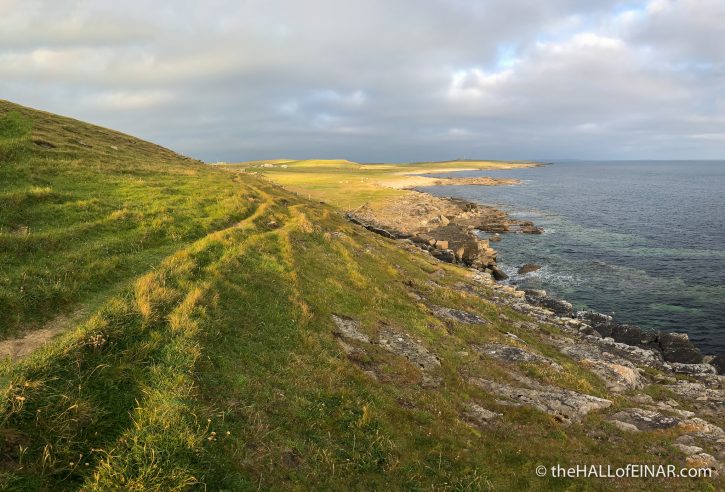
The power of the Atlantic has piled up a storm beach and created a pond next to the cliffs. Facing the southwest gales, it holds back the fresh water from reaching the sea. This is Muckle Water, near the farms of East and West Kirbest. All that keeps it from draining is the high beach, which has been hurled up a short slope, and is made of storm-brought stones
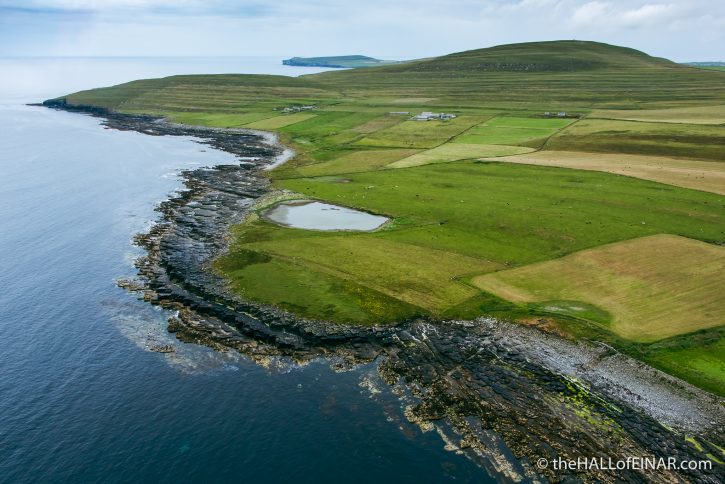
I love the word muckle. It’s from the same Proto-Indo-European language root as the Greek word mega, meaning ‘a lot’. I have muckle love for the word.
From the ridged side of Skea Hill I can see a Scootie Allan (Arctic Skua) hunting. They have a very distinctive silhouette, with two long tail feathers making a central point:
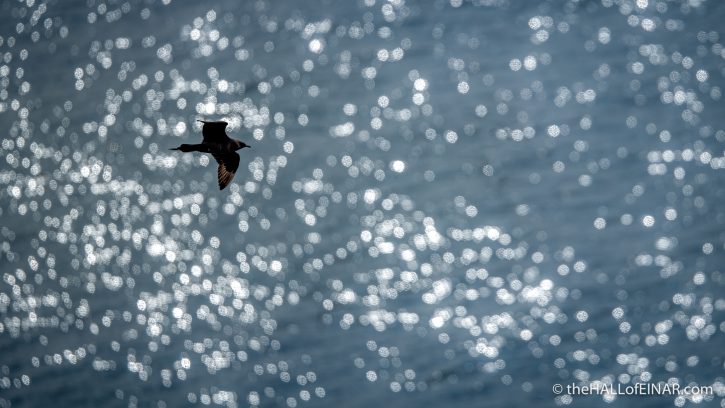
It’s possible to just sit here, quietly and, if you choose your spot well, they will appear close-by as they come back from a hunt and sweep majestically up the hill to their chicks.
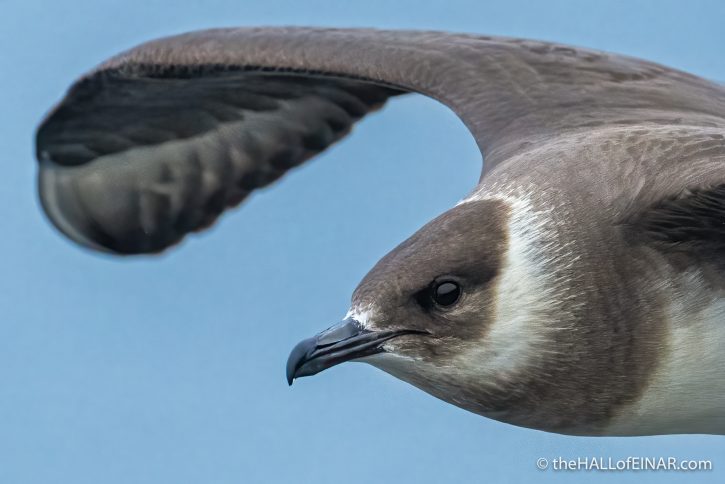
They always seem to have a drip on the end of their beak.
Their hunting consists of kleptoparasitism, stealing fish from other fish-eating birds, which they catch up with, and steal from, when they are speeding back to their nests. Whenever Scootie Allans see a convoy of Couter-nebs (Razorbills), Aaks (Guillemots) or a lone Tammie Norrie (Puffin) with a silver fish in their beak, they set off with tremendous power, speed and agility to rob them. This is one of the light-coloured and patterned forms:
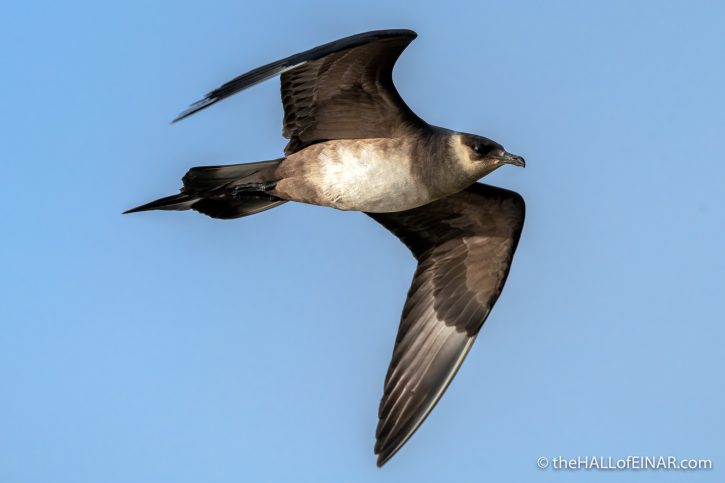
Their wings have a real whip about them and they can accelerate and manoeuvre easily. This is one of the dark-coloured forms.
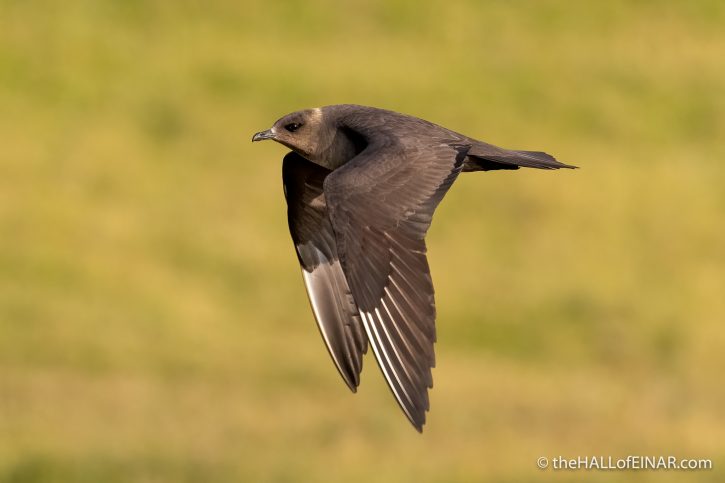
Further up the coast is a geo (a rocky inlet, pronounced with a hard ‘g’), called Whey Geo, full of nesting Kitticks (Kittiwakes), settled uneasily on narrow rock ledges. Here, the Scootie Allans glide down to surprise their unsuspecting quarry, which are passing by constantly from their feeding grounds to their nests towards the north of the coast.
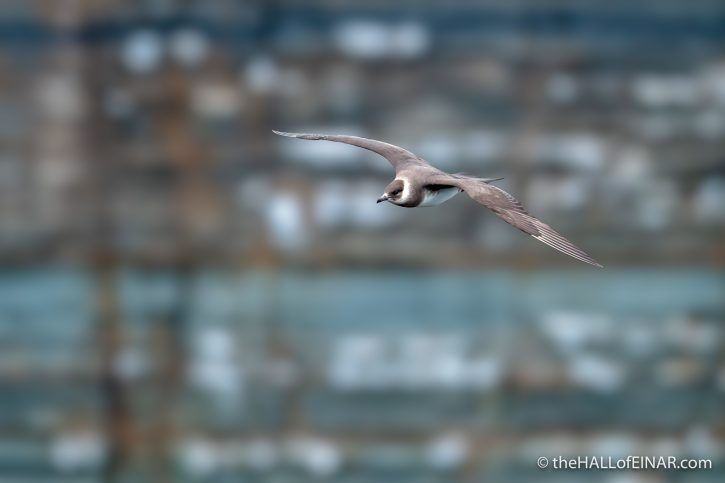
This one is a pale form, a colour and pattern variation which still mystifies scientists.
I can see one out in the ocean. Behind it is the mainland of Orkney viewed from the island of Westray. It’s the headland of Marwick Head and the Kitchener Memorial on top with the Brough of Birsay, a small tidal island to the right.
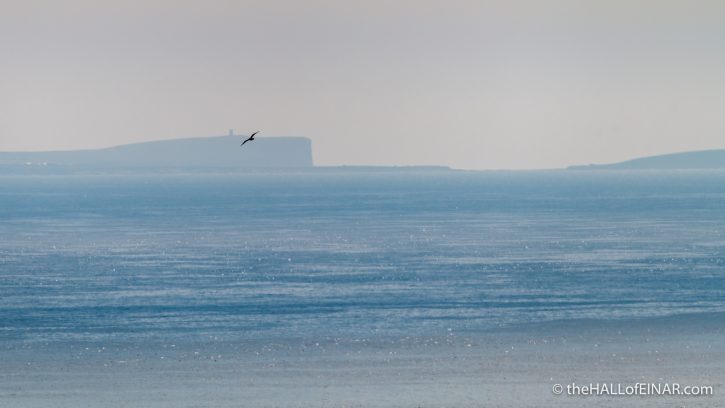
Soon all the Scootie Allans will be gone, to spend our winter off Africa or South America, continuing to harass other birds into giving up their hard-won fish. It’s a pirate’s life on the ocean waves.
More on Arctic Skuas
 Dropping in for a bath I'm crouching down on shattered bare rocks in the desolate far north of Westray trying to get a photograph of… read more
Dropping in for a bath I'm crouching down on shattered bare rocks in the desolate far north of Westray trying to get a photograph of… read more Dark morph Arctic Skuas come in several different colour varieties. Here's the darkest: Aren't the feather patterns on its underwings beautiful? They're… read more
Dark morph Arctic Skuas come in several different colour varieties. Here's the darkest: Aren't the feather patterns on its underwings beautiful? They're… read more Incoming! We spent an amazing evening with the Scootie Allans of Westray. Arctic Skuas are beautiful, impressive birds, with sleek bodies… read more
Incoming! We spent an amazing evening with the Scootie Allans of Westray. Arctic Skuas are beautiful, impressive birds, with sleek bodies… read more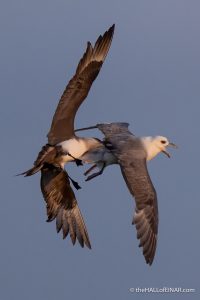 A Scootie Allan attacking a Mallimack A Scootie Allan attacking a Mallimack. An Arctic Skua attacking a Fulmar. A Stercorarius parasiticus attacking a Fulmarus glacialis. Dramatic, isn't… read more
A Scootie Allan attacking a Mallimack A Scootie Allan attacking a Mallimack. An Arctic Skua attacking a Fulmar. A Stercorarius parasiticus attacking a Fulmarus glacialis. Dramatic, isn't… read more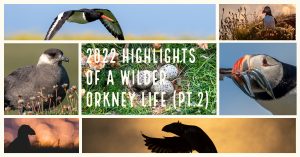 2022 highlights of a wilder Orkney life (part 2) August in Orkney can be quieter than May, June or July when it comes to bird life. In 2022, August… read more
2022 highlights of a wilder Orkney life (part 2) August in Orkney can be quieter than May, June or July when it comes to bird life. In 2022, August… read more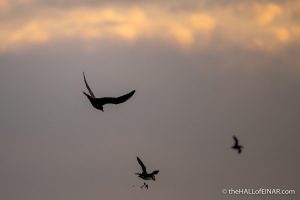 Puffins chased by Arctic Skuas A Puffin's dinner is an Arctic Skua's dinner. Arctic Skuas are hunting Puffins for their fish on Westray and they're… read more
Puffins chased by Arctic Skuas A Puffin's dinner is an Arctic Skua's dinner. Arctic Skuas are hunting Puffins for their fish on Westray and they're… read more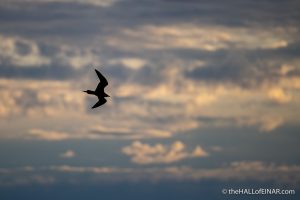 One Arctic Skua evening Arctic Skuas are one of my favourite birds. Their swept-back wings, hooked beaks and pointed tail feathers make a distinctive… read more
One Arctic Skua evening Arctic Skuas are one of my favourite birds. Their swept-back wings, hooked beaks and pointed tail feathers make a distinctive… read more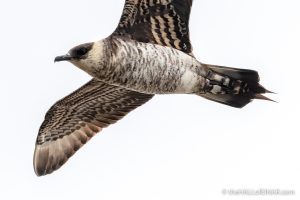 Juvenile Arctic Skua There's a juvenile Arctic Skua overhead. I'm getting amazing views. It's not from this year because it has very different… read more
Juvenile Arctic Skua There's a juvenile Arctic Skua overhead. I'm getting amazing views. It's not from this year because it has very different… read more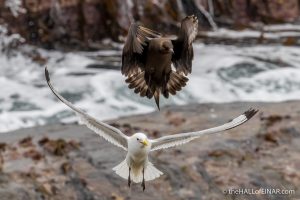 Arctic Skua attacking a Kittiwake I've seen Great Skuas attacking juvenile Kittiwakes on Westray. They pluck them out of the air and peck them to… read more
Arctic Skua attacking a Kittiwake I've seen Great Skuas attacking juvenile Kittiwakes on Westray. They pluck them out of the air and peck them to… read more